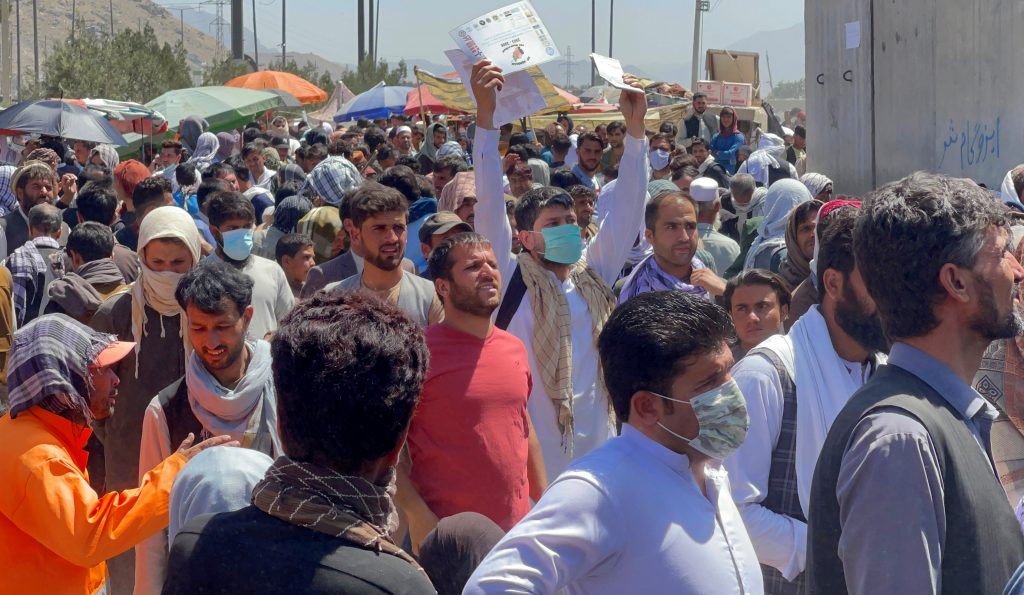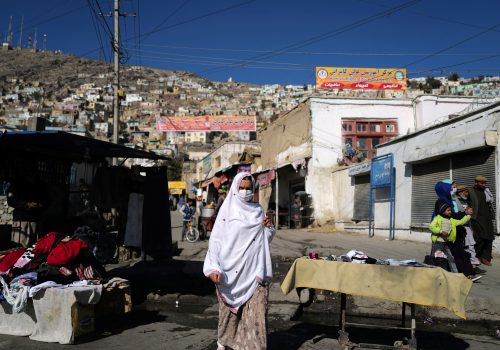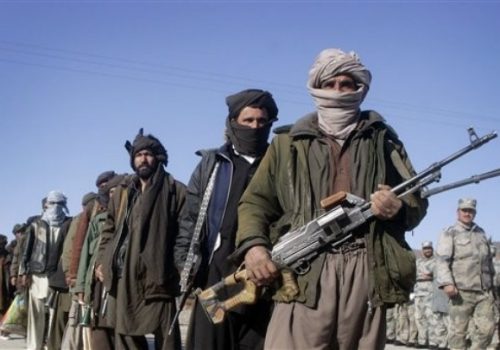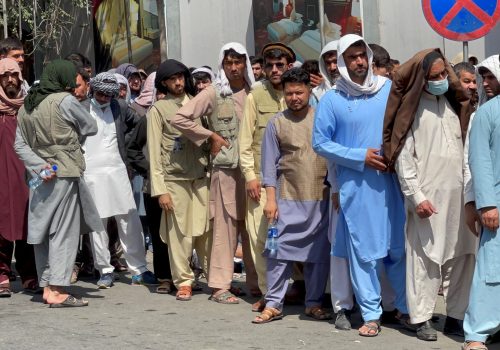Introduction
In August 2021, the Taliban took Afghanistan by force for the second time in their history. This event coupled with the hasty US withdrawal ended the bloodiest and longest war of the United States. Amid the withdrawal of foreign troops, the lingering issue of ethnic discord once again is rearing its ugly head across Afghanistan.
Afghanistan, unlike many other nation states, is an ethnically diverse country that has many ethnicities in sizable populations. It is a country of minorities, with no ethnic group representing a majority of the population. Of these ethnicities, the four major groups are Pashtuns, Tajiks, Uzbeks, and Hazaras. There are also other sub-nationalities and ethnicities like Turkmens, Nuristanis, Aimaq, Baloch, and others. The Pashtuns, which comprise up to 40 percent of the population, have managed to rule the country for the last one and a half-centuries with the exception of three periods in the twentieth century.
Rewinding back to the late nineteenth century, Afghanistan was created as a “buffer zone” between the British Raj in India and the Tsarist Empire in Russia, which took over Central Asia. It was thus under the suzerainty of the British, making Afghanistan’s foreign policy dependent on Calcutta, the seat of the Raj. The British and their indirect rulers in Afghanistan, the Pashtun elites, were well aware of the ethnolinguistic diversity of the country. They therefore developed a highly centralized political order right from the outset. Mastermind of this centralized political order was Amir Abd Ur Rahman, who was installed by the British and received annual cash payments and ammunition to pacify the population and establish a centralized monarchy. This political order not only favored Pashtuns but also sowed the seeds of ethnic discord in Afghanistan. Such ethnic discord has now transformed into an existential threat to the country.
Fast forward to 1996, and the Taliban—a group dominated by Pashtuns—marginalized the other ethnic communities of Afghanistan during their stint in power. Now, the Taliban is once again at the helm of political affairs and as such the group has already repeated its history despite its claim of forming an inclusive national government. This time, however, Afghanistan’s other ethnic communities will not tolerate a centralized, Pashtun-exclusive government. Consequently, the uncompromising attitude of the militant group will likely only lead to another bloody civil war or the permanent geographical disintegration of Afghanistan.
The birth of a monster: Ethnic discord in Afghanistan
Globally, there have been two major models of nation state formation: multicultural and homogenous. In Afghanistan, the Pashtun political elite have historically carried out the attempted homogenization of society in order to suppress revolts by hostile groups or nationalities. Homogenization also can involve the process of relocating members of one ethnic community to the lands of other nationalities or communities.
In the colonial period, this homogenization of society was common and frequently used by colonial powers for controlling their colonies. For instance, after conquering Central Asia, Tsarist Russia followed the policy of homogenization of conquered lands and as a consequence, one can now see a sizable chunk of Russian population and culture in the independent Central Asian states. The Pashtun kings of Afghanistan followed the same policy of homogenization for diluting other ethnic populations in their lands. Amir Abd Ur Rahman—famous among Pashtuns as the “Iron Amir” of the late nineteenth century—followed such a policy. Rahman learned the homogenization technique from Tsarist Russia while he was living in exile in Central Asia.
Rahman pursued the policy in 1885 and relocated many Pashtun tribes from the south and southeast parts of Afghanistan to the north, northeast, northwest, and central parts of the country. Traditionally, Pashtuns were predominantly in the south and southeast of the country while the north, northeast, west, and central parts of the country belong to Tajiks, Uzbeks, Hazaras, and other ethnic communities. Until 1885, Pashtun tribes were relocated to the north and central parts of the country as a punishment. After 1885, however, Rahman persuaded Pashtun tribes to migrate towards northern and central parts of the country through economic and other incentives. At that time, the government reimbursed travel expenses of the migrating Pashtun tribes, granted them cultivable lands seized from other communities, and exempted them from taxes for three years. In return, no one from other ethnic groups from the northern and central parts of Afghanistan were allowed to move to eastern and southern parts of Afghanistan where Pashtuns had previously dominated.
In consequence, not only were a huge number of Pashtun tribes relocated into the lands of Tajiks, Uzbeks, Hazaras, and the Baloch, but many of the tribes of the latter ethnicities were forced to leave their lands. Mass migration of the Hazaras, Nuristanis, and Baloch tribes into neighboring Persia and then-India are examples of this cruel and biased policy of Amir Abd Ur Rahman. This policy continued in subsequent governments until King Amanullah Khan institutionalized it by issuing The Settlers to Qataghan Act of 1923. King Amanullah’s successors maintained it just the same until 1973 and the end of monarchy in Afghanistan. Today it continues under the Taliban and has even intensified.
It was also an attempt to subdue the Tajiks, Hazaras, and Uzbeks through “Pashtunization” of the north, west, and center of Afghanistan. As the northern territories of the kingdom were not under the control of Pashtun dynasties until the late nineteenth century, the aim was to bend the Tajik and Turk population of the north.
The reason for this homogenization policy was to disconnect Tajiks and Uzbeks from their fellow community members in Afghanistan and the other side of the northern border. This move was to secure the northern border from the threats and infiltration of Russians. In addition, it was an attempt to subdue the Tajiks, Hazaras, and Uzbeks through Pashtunization of the north, west and center of Afghanistan. The Pashtun rulers wanted to effectively control the northern parts of the country which, due to its many marginalized non-Pashtun populations, were at odds with the central government. The Pashtun elite also wanted to benefit from the fertile lands in the north. With these factors in mind, starting in 1885 the seeds of ethnic discord were sowed in Afghanistan and would have a lasting impact that can still be felt today.
From 1885 until today, this movement of Pashtun tribes from the south and southeast of Afghanistan (and other side of the Durand Line) to the northern and central parts of the country continued at a different pace and consequently the Pashtun population in the north and center steadily increased. Not only did the population of Pashtuns increase in the northern areas, but the developmental projects in these parts were executed to favor the Pashtun settlements. This further fueled ethnic discord and members of other ethnicities felt that they were only second-class citizens of the country.
After the Soviet invasion in 1979, President Babrak Karmal rose to power and for the first time in history, Pashtun political dominance came to an end. Unfortunately, with the defeat of the Soviets and the conquest of the Taliban in 1996 Pashtuns once again, emerged as the dominant political and military group in the country. After capturing Kabul in 1996, the Taliban continued their Pashtun-centric policies and marginalized other ethnic communities. Throughout their rule, the Taliban were fiercely opposed by the United Front, a loose military conglomerate of Tajiks and other ethnicities led by Ahmad Shah Massoud.
The United Front played a key role in dislodging the Taliban from Kabul. Their stronghold, the Panjshir Valley, was used as a launching pad for ground operations by the United States and allies in the 2001 invasion. After the fall of the Taliban in 2001, an interim government was established in the country. This US-backed constitutional and democratic political order, however, had a cardinal sin: it revived the same highly centralized political and administrative system through the 2004 constitution.
Consequently, the shortcomings of old resurfaced yet again in an overly centralized political order backed by powerful western sponsors. As Afghanistan entered this new period in 2001, ethnic discord would continue to sow turbulence and instability across the country.
The current state of affairs
In August 2021, the Taliban insurgency finally prevailed and the group is in control of the capital once again. The new Taliban government is predominantly composed of Pashtun Taliban members and less than ten percent of the key posts and ministries are allocated to other ethnic groups, with no women represented. Even the less than ten percent of non-Pashtun individuals in the government are allocated to those who nevertheless subscribe to Taliban views and are active Taliban members.
Even after announcing a general amnesty for the population of Afghanistan and former government officials in particular, the Taliban has arrested and tortured employees and army members from the previous government. They not only evict people from their lands but also burn down their homes. According to Human Rights Watch, “in early October 2021, the Taliban and associated militias forcibly evicted hundreds of Hazara families from the southern Helmand province and the northern Balkh province. These evictions followed earlier evictions from Kunduz, Daikundi, Uruzgan, and Kandahar provinces.” The lands of these non-Pashtun families are then redistributed to Pashtuns and Taliban sympathizers.
Similarly, the Taliban also arbitrarily arrests individuals that criticize their atrocities and draconian rule. For instance, the Taliban arrested University Professor Faizullah Jalal when he publicly criticized the militant group in a live TV show. Though they later released him, this was not an isolated incident. According to media reports, the Taliban have imprisoned scores of individuals including women for mere expression of their opinions. Such discriminatory policies and practices of the Taliban this time are only reinforcing the narrative of other marginalized ethnic groups that they have few rights in the so-called Islamic Emirate of Afghanistan. This time, this barbaric and centralized rule of the militant group is not acceptable to the members of other ethnicities.
For instance, the National Resistance Front of Afghanistan—an anti-Taliban movement based in northern Afghanistan—is campaigning for a decentralized political order in Afghanistan. The movement stressed this aim through dialogue directly with their arch enemy, the Taliban. At a three-day meeting between the Taliban and the National Resistance Front of Afghanistan hosted by Iran in January of this year, representatives of the movement presented the proposal for a decentralized political order to the Taliban representatives chaired by Foreign Minister Amir Khan Muttaqi, which was rejected by the Taliban.
Sibghatullah Ahmadi, spokesman for the National Resistance front, said in an interview with BBC Farsi after the talks, “on the third day of the meeting, the Taliban angrily left the talks and rejected our demands for a decentralized government with the presence of women, respect for women’s rights, citizens’ rights, and respect for freedom of speech and expression. He added, “the issue of women’s rights, children’s rights, establishing a lawful government through a fair election, eliminating tyranny, freedom of expression, and changing the system to decentralized are our red lines and we will never cross these red lines.”
Several factors have led to the realization of other ethnicities that they must be included in the political order of the country. The first of these factors is the role of Babrak Karmal. The Babrak Karmal era empowered marginalized ethnic groups for the first time in Afghanistan. The second significant factor was the formation of the United Front. The United Front successfully defended their stronghold in the northeast against the Soviets and then against the Taliban in the late 1990s. Also, the United Front played a key role in defeating the militant group in 2001 along with foreign troops. The third factor of their empowerment is the experience of a US-backed constitutional and democratic political order in which they had a considerable say in governmental affairs, at least until former Afghan President Ashraf Ghani used his presidential powers to marginalize them.
Ghani, during his eight years in office, had a very hostile relationship with non-Pashtun political leaders, and always sought to marginalize them. For example, General Abdul Rashid Dostum, who belongs to the Uzbek ethnic group of Afghanistan and has large influence among Uzbeks, was Ghani’s running mate in the 2014 presidential election. Once the election was over and Ghani won the votes of Uzbeks, he increasingly excluded Dostum from Afghanistan political affairs. He even spent the last two years of his vice presidency in exile in Istanbul. Likewise, he had a very controversial relationship with the leaders of other ethnic groups in Afghanistan, specifically the Tajiks and the Hazaras.
Ghani, who himself is a Pashtun, during the eight years of his rule implemented many ethnic policies that favored a particular ethnic group (Pashtuns). During his eight year presidency, he made several controversial decisions that fueled political tensions among the country’s ethnic groups. For example, he repealed a law passed in parliament that would have allowed each citizen to choose what ethnicity they belong to. Instead, he issued a law that classified everyone as “Afghan.” Many non-Pashtuns do not consider themselves to be “Afghan,” a term that many in the country consider to refer to the Pashtun tribes.
In addition, the eight-year government of President Ghani was always accused of systemic ethnic favoritism to Pashtuns. In September 2017, the daily newspaper Etilaat Roz published the details of a leaked memo in the Administrative Office of the President showing that jobs were awarded with an eye to keeping control in the hands of Pashtuns while giving the appearance of diversity. Similarly, in November 2017, another leaked memo published in the Afghanistan’s press showed that Ghani’s administration implemented the same policies in security sectors.
Finally, the availability of social media and rising education access over the past twenty years also shaped youth perspectives on the state and society. This enthusiastic youth is demanding a just political order in which every individual has the right to govern through democratic means.
Because of these factors, strong political opposition and a robust civil society developed in the country since 2001. For instance, Fawzia Koofi, a prominent leader of the Movement of Change in Afghanistan and a member of the Afghanistan delegation that negotiated with the Taliban in Doha, stated in an exclusive interview, “in Afghanistan, the political structure has always been such that one person is the decision-maker, and politically there has been an oral agreement that the main power should belong to a particular ethnic group and the speaker of a particular ethnic group (Pashtun). And this had always led to being in a way that political power must be in the hands of Pashtuns, administrative power in the hands of Tajiks, service works usually to Hazaras, and commercial and land-related work to the Uzbeks.”
Similarly, in another exclusive interview, Dr. Latif Pedram, the founder and leader of the Afghanistan National Congress Party, maintained that “with the withdrawal of foreign troops, another war has begun in Afghanistan which is caused by ethnic injustices.” These political and civil society leaders have changed the people’s perspective about the government in the country and now the common person in Afghanistan demands a just political order that is responsive to the needs of every ethnic group rather than favoring the Pashtun elite.
This time around, the Taliban will need to deal with a hostile population across the northern, central, and western parts of the country. In addition, the Taliban has also to face the armed forces of the National Resistance Front. Neither will compromise on their right to self-govern. On the other hand, the Taliban had made it clear that the group will rule via an excessively centralized political order where only the Pashtun elite will hold power. Given these factors, Afghanistan will likely head either towards a bloody civil war akin to the 1990s or to geographical disintegration. Still, there is a third likelihood, and this is that the country may transform into a functioning state. For this to occur, it will require a decentralized and just political order.
The way out
As discussed, Afghanistan is on the verge of yet another catastrophe, be it civil war or geographical disintegration. That said, it is not too late. The marginalized ethnic communities of Afghanistan are a formidable force for the Taliban to reckon with, but they can still coexist if a decentralized and just political order is established.
Prominent figures from Afghanistan’s opposition and civil society are demanding the establishment of a decentralized government in the country. In the same interview, Fawzia Koofi also argued that “the issue of Afghanistan is ethnic. And to prevent ethnic wars and solve Afghanistan’s problems, and to prevent further destabilization of Afghanistan, power must be properly decentralized.”
Similarly, Dr. Latif Pedram also argued that Taliban rule is unacceptable and due to the Taliban’s Islamic Emirate, the country is headed towards disintegration. In his words, “Afghanistan is collapsing due to ethnic injustice, class strife, oppression, and ethnic supremacy. At present, if the framework of such a country is to be maintained and rebuilt, a new social contract needs agreed upon, and this new social contract must be a federal government to maintain the framework. Otherwise, disintegration is the only solution.”
In an interview with National Resistance Front leader Ahmad Massoud and Stefanie Glinski, Massoud argued that decentralization is the only solution to the Afghanistan dilemma. In April 2020, he published an op-ed in The New York Times announcing this demand. The united ethnic groups will put up stiff resistance to the centralized and unjust Taliban government which may ultimately lead to another bloody civil war or geographical disintegration. If the Taliban want peace to prevail in the country then they must tread the path of decentralization and the establishment of a just political order in Afghanistan.
Decentralization means that political and administrative systems must be transmitted to the grassroots level. This objective can be achieved by several political arrangements. The first political arrangement is a federalist system like in neighboring Pakistan. But the problem of a federal state is that it requires a strong central government that has considerable say in the affairs of federating units. So, federalism is not for Afghanistan as in federalism, political power will likely once again become concentrated in the hands of one ethnic group.
The next model of decentralization is a confederate state. In a confederate state, all the participating states form a loose coalition while retaining strong local governments. An example of decentralization of this type is in Switzerland. Though Afghanistan can’t achieve the level of decentralization that exists in Switzerland, it can learn from Switzerland’s model. There may be other forms of political decentralization that can solve Afghanistan’s dilemma as well.
These forms of decentralization can be studied and then tailored to the needs of the country, but what is required now of all stakeholders and particularly of the Taliban is to discuss and agree on a new social contract and political order for the country. This new social contract and political order must be based on the principles of decentralization and social justice if the country wants to remain peaceful, intact, and sovereign.
Natiq Malikzada is a freelance journalist and holds a master’s degree in International Relations and Middle Eastern Affairs. He tweets @natiqmalikzada.

The South Asia Center is the hub for the Atlantic Council’s analysis of the political, social, geographical, and cultural diversity of the region. At the intersection of South Asia and its geopolitics, SAC cultivates dialogue to shape policy and forge ties between the region and the global community.
Related content
Image: Crowds of people show their documents to US troops outside the airport in Kabul, Afghanistan, on August 26, 2021. Photo by a Reuters stringer.



